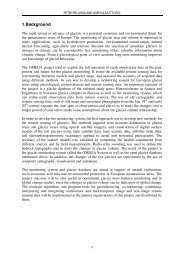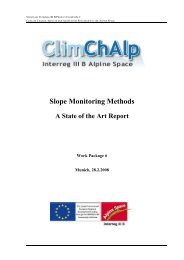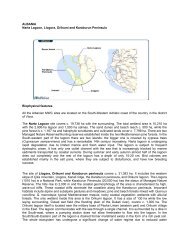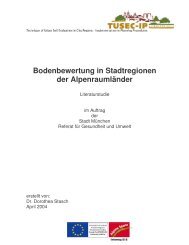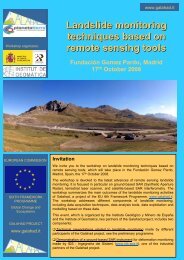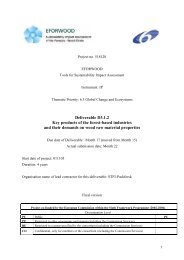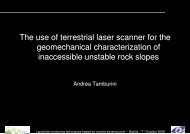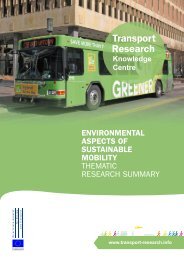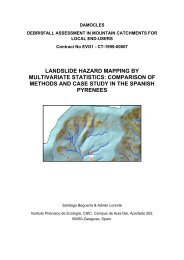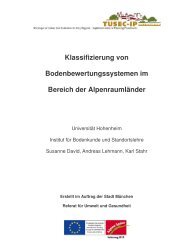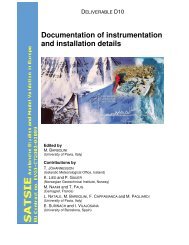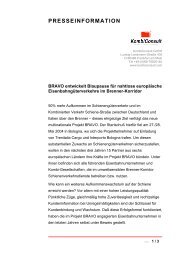Decision Support Tools - Thematic Research Summary - Transport ...
Decision Support Tools - Thematic Research Summary - Transport ...
Decision Support Tools - Thematic Research Summary - Transport ...
You also want an ePaper? Increase the reach of your titles
YUMPU automatically turns print PDFs into web optimized ePapers that Google loves.
PT operators from providing efficient and user-friendly services. Furthermore, “hardmeasures” (i.e. changes in relative costs between modes) risk failing to obtain theexpected impacts on individuals if they are not able to properly deal with the subjectivesphere of individuals (e.g. perceptions, attitudes and values, lifestyle, level of informationon services, and the attitudes towards modes). Significant modal shifts can only beachieved by adopting approaches which combine classical transport policy measures with“soft measures” which can influence individuals’ perceptions and attitudes towards moresustainable modes (e.g. awareness arising campaigns, more information on PT servicesand more user-friendly and easy-to-understand tariff systems) (THINK-UP, 2003).With respect to the freight transport market segmentation, a first finding is that a sectoralapproach and a disaggregation per type of products is preferred in industrial logisticsprivilege, while spatial aspects are preferred in distribution logistics with polarisation inspecific European zones. For policy impact analysis, it is necessary to consider allalternatives modes (in particular inland waterways and Short Sea Shipping) and not onlythe rail mode. Finally, the assessment of policy implementation (or policy context) musttake into account the influence (through lobbying) of actors like mode operators andindustrialists (THINK-UP, 2003).Concerning mobility prediction, it has been found that strategic models with a strongconceptual and theoretical basis and an understanding of policy can reduce the gapbetween policy assessment and mobility prediction due to differences of scope betweenthe two exercises, the constraints of technical tools or the unavailability of comparativedata. As for projection tools and trend estimations, it has been found that, in the definitionof a scenario, it is important to concentrate not only on macro-economic variables, but alsoon other variables such as urbanisation, household income distribution, and sectoralchanges) (THINK-UP, 2003).The review of the state of the art of projection tools and the comparison of inputs andoutputs of national and European models has led to the identification of differencesbetween traffic reference data, and scenario hypothesis for both socio economic andtransport variables. It has been found that there is a need for a common set of data inEurope that can be shared in studies, with a set of workable scenarios relevant for thepresent European context. Once harmonisation in scenario definition has been achieved,different models could be run and the differences between models analysed. Thecomparison between the different results can improve the understanding of alternativedevelopments of the transport system (THINK-UP, 2003).Another thematic network has been devoted to making advanced transport models moreaccessible to decision makers (SPOTLIGHT-TN). A first group of activities has focused onthe development of standard quality control guidelines (called “Dcode”) supporting<strong>Thematic</strong> <strong>Research</strong> <strong>Summary</strong>: “<strong>Decision</strong> <strong>Support</strong> <strong>Tools</strong>” Page: 25 of 74<strong>Transport</strong> <strong>Research</strong> Knowledge Centre




